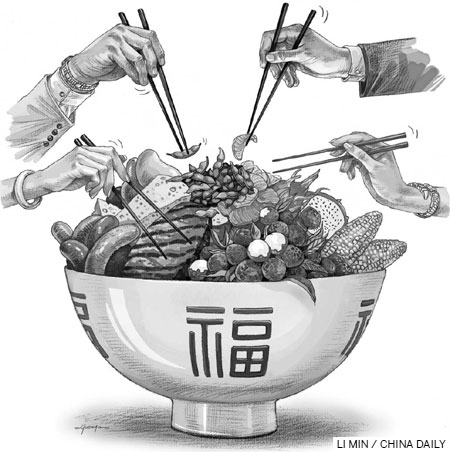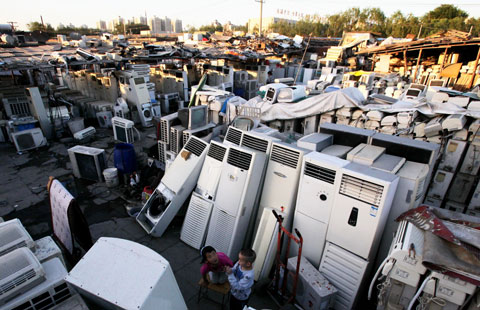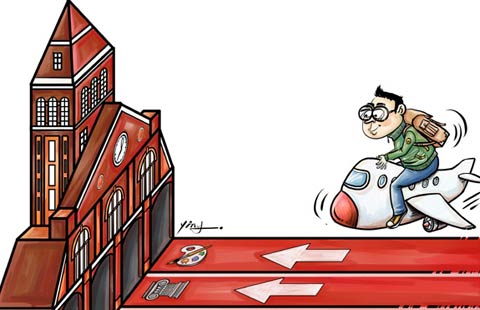A lot on the plate
By Lu Chang (China Daily) Updated: 2012-03-31 07:54But countries with vast arable land for expansion, such as Brazil and Argentina, are also racing to meet demand from China.
China imported 19.8 million tons of soybeans from Brazil last year, accounting for 38 percent of the total imports of 52 million tons from all sources. This helped Brazil surpass the US as the biggest soybean exporter to China.
Cheng said that rising incomes and the growing number of middle class people in China are contributing to a growing demand for food imports. "More than 1 million people every year move into the middle class segment in China. The higher disposable income will help them to buy more meat, oil and milk. So it is natural that food imports will continue to grow," he said.
Another reason China needs to import more agricultural goods is that the increased output of meat and grains will lead to a decrease in the amount of arable land, water supplies and other natural resources. Grain imports are often seen as a better approach for the wiser use of environmental resources.
"I don't think self-sufficiency is something that holds in good stead nowadays, as the world is more developed and countries more specialized in what they can produce with good value for the global society," said Marcos Neves, professor of strategic planning and food chains at the School of Economics and Business, University of Sao Paulo in Brazil.
"Development in China requires a tightrope walk between green causes and the need to secure food supplies for the growing masses," Neves said. "Take Brazil, for instance. It is already the largest food exporter, and has at least 100 million hectares that can be used for agriculture and biofuel production, in a sustainable manner, being able to supply the needs of China in a safe and reliable way."
Li Guoxiang, a senior researcher on rural development at the Chinese Academy of Social Sciences, expects a golden window of five to 10 years for food imports, considering that the nation has some $3 trillion in foreign exchange reserves and a strong purchasing ability for imports, coupled with healthy trade balances.

- Seven villagers murdered in N China
- China steps up tobacco control efforts
- Five jailed for separatism in Xinjiang
- Letter asks for leniency in poisoning case
- Antibiotics in surface water pose 'indirect health risk'
- Tianjin airport opens up transit link to Beijing
- High levels of antibiotics in China's major rivers
- China to dig tunnel for Asian rail system
- Bering strait line to US possible, experts say
- China: Stop oil rig harassment







